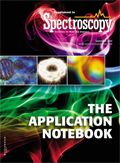Simultaneous Single Reaction Chamber Microwave Digestion of Mixed-Consumer Products
Application Notebook
Milestone's UltraWAVE microwave digestion system with single reaction chamber (SRC) technology, enables the simultaneous digestion of up of to 22 different sample types and chemistries at temperatures and pressures as high as 300 ?C and 199 bar.
Milestone's UltraWAVE microwave digestion system with single reaction chamber (SRC) technology, enables the simultaneous digestion of up of to 22 different sample types and chemistries at temperatures and pressures as high as 300 °C and 199 bar. SRC technology eliminates the challenges of traditional bench top systems, such as batching similar matrices, vessels handling, and cleaning, while increasing throughput and providing high quality digestions of even the most difficult sample types.
Summary
Sample preparation of consumer products prior to ICP and ICP-MS analysis can pose significant challenges as many samples, especially those comprised of mixed elastomers, silica-based additives, titanium dioxide, or alumina-metal complexes are difficult to digest. Microwave sample preparation is an excellent choice for digesting these matrices, however, given the wide variety of sample types, traditional microwave systems would require the use of multiple methods, multiple vessel types, and multiple digestion runs using different programs and acid combinations. Additionally, some sample types could not be digested using traditional systems as the temperatures, and subsequent pressures, exceed the specifications of even the most robust digestion vessels.
In this application note, 15 samples comprised of a variety of different consumer products (body lotion, lipstick, sunscreen, toothpaste, shampoo, and bar soap) are digested simultaneously in Teflon and disposable glass vials using a single microwave program. As SRC eliminates the requirement to batch sample types, varying acid chemistries and volumes were selected to ensure complete digestion.
Instrumentation
Milestone's UltraWAVE microwave digestion system with 15-position rack (15 × 15 mL vials) using disposable glass and Teflon (when hydrofluoric acid is required) digestion vials.

Table I: Sample and chemistry
Method Details
Samples were weighed into the digestion vials and the appropriate acid chemistries were added as described in Table I. The samples were placed onto the rack, and lowered into the single reaction chamber. To immediately raise the boiling point of the reagents inside, prevent cross-contamination, and eliminate the loss of volatile elements during the digestion process, the chamber was pre-pressurized to 40 bar with nitrogen. Given the challenging nature of some sample types, the samples were digested at 250 °C for 10 min (Table II). Once the system has sufficiently cooled, the digested solutions were removed from the UltraWAVE and transferred to polypropylene tubes for dilution and visual inspection.

Table II: Microwave method
Results
All of the samples were completely digested without any remaining particulate or undigested material. Total digestion time was less than 1 h including cooling and de-pressurization of the system.
Conclusion
Like many industries, consumer products testing labs are being driven to perform trace metals analysis on a routine basis. Given the diversity and often complex nature of these samples, chemists may encounter a number of problems when trying to prepare them for analysis affecting lab efficiency and data quality. Microwave digestion using the UltraWAVE with single reaction chamber technology provides labs with the necessary flexibility to successfully digest even the most difficult sample types using a single microwave program. With the use of disposable vials and elimination of vessel handling sample throughput is greatly enhanced while labor and running costs are minimized.
Milestone, Inc.
25 Controls Drive, Shelton, CT 06484
tel. (866) 995-5100, fax (203) 925-4241
Website: www.milestonesci.com

Thermo Fisher Scientists Highlight the Latest Advances in Process Monitoring with Raman Spectroscopy
April 1st 2025In this exclusive Spectroscopy interview, John Richmond and Tom Dearing of Thermo Fisher Scientific discuss the company’s Raman technology and the latest trends for process monitoring across various applications.
A Seamless Trace Elemental Analysis Prescription for Quality Pharmaceuticals
March 31st 2025Quality assurance and quality control (QA/QC) are essential in pharmaceutical manufacturing to ensure compliance with standards like United States Pharmacopoeia <232> and ICH Q3D, as well as FDA regulations. Reliable and user-friendly testing solutions help QA/QC labs deliver precise trace elemental analyses while meeting throughput demands and data security requirements.